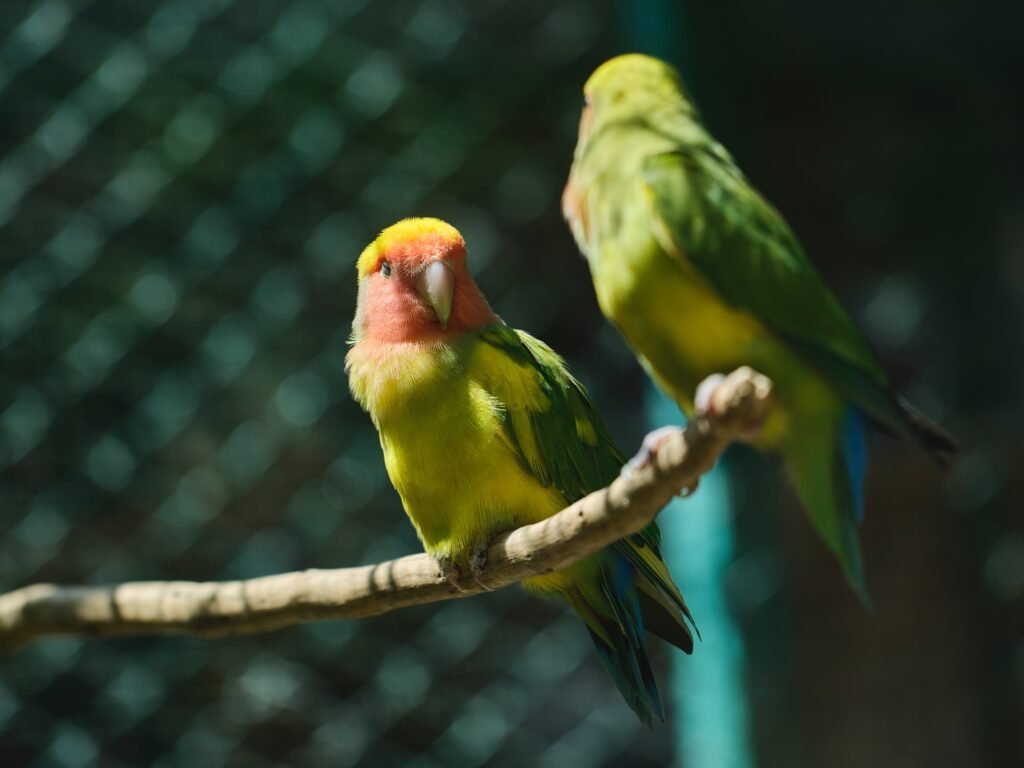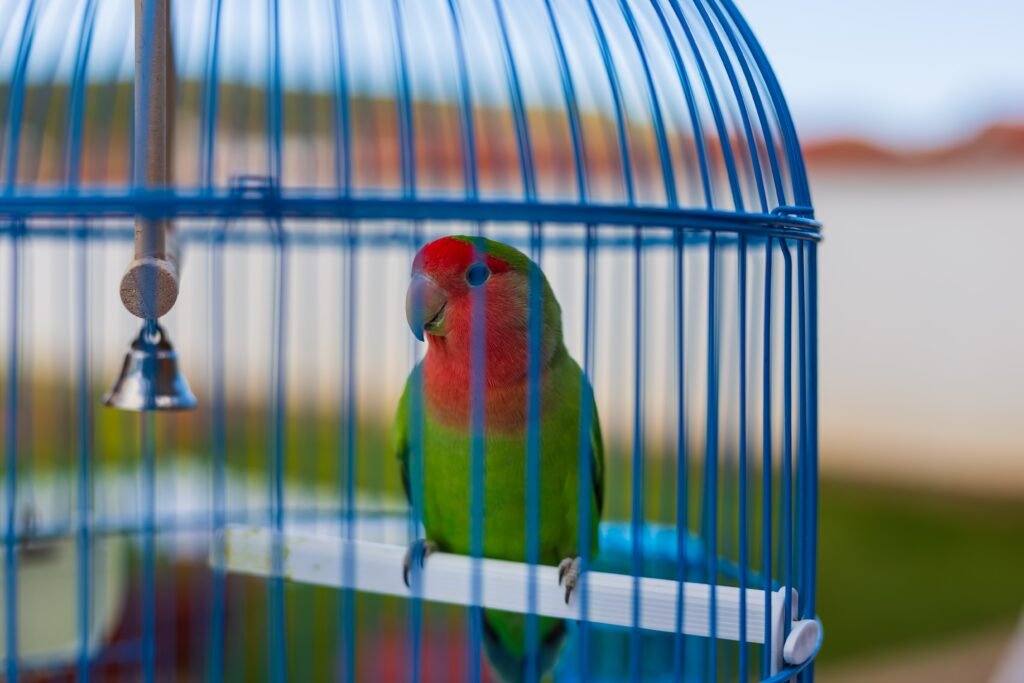Lovebirds are delightful and affectionate birds that make wonderful pets. They are known for their strong pair bonding and lively personalities. However, to ensure their overall well-being and happiness, it is crucial to understand the importance of socialization for lovebirds. This article will explore how you can help your lovebirds thrive in social settings.
The Significance of Socialization
Socialization is vital in developing lovebirds, just like it does for humans. It helps them learn appropriate behaviors, build trust, and develop strong bonds with their human caretakers. Proper socialization ensures lovebirds are comfortable and confident in various environments and situations.
Early Socialization is Key
Starting the socialization process from a young age is essential for lovebirds. When lovebirds are exposed to different people, places, and experiences during their early stages of development, they become more adaptable and less fearful. This will greatly benefit their overall well-being and make them more enjoyable companions.
During the early stages of socialization, lovebirds should be introduced to various people, including family members, friends, and visitors. This exposure will help them become familiar with different human voices, scents, and behaviors. It is important to handle them gently and talk to them softly to create a positive association with human interaction.
Socializing with Humans
- Spending Quality Time: One of the most effective ways to socialize your lovebirds is by spending quality time with them. This can include gentle handling, talking softly, and providing them with positive reinforcement, such as treats or praise.
Create a calm and comfortable environment:
- Created quality time with your lovebirds.
- It is near their cage or play area, and they talk to them in a soothing voice.
- Let them approach you at their own pace and avoid forcing them into interactions.
Offer their tasty treats, such as small pieces of fruit or seeds, as a reward for their positive behavior.
- Creating a Safe Environment: Ensure the environment is safe and free from potential hazards. Lovebirds should have enough space to explore and interact with their surroundings without feeling threatened.
Make sure that the room where your lovebirds are kept is bird-proofed. Remove any toxic plants, chemicals, or small objects they could swallow. Provide them with a spacious cage that allows them to move around comfortably and includes perches, toys, and swings for mental and physical stimulation.
- Positive Reinforcement: Use positive reinforcement techniques to encourage desired behavior. Reward your lovebirds with treats or praises when they display behaviors you want to reinforce, such as stepping onto your hand or playing with toys.
Positive reinforcement is a powerful tool for teaching lovebirds new behaviors and strengthening the bond between you and your pets. When they engage in desired behaviors, such as stepping onto your hand or exploring new toys, offer them a treat or shower them with praise. This positive association will motivate them to repeat the behavior in the future.
- Gradual Exposure: Introduce your lovebirds to different experiences and stimuli gradually. Start with quieter and less stimulating environments, then gradually expose them to louder noises and more activity. This will help them become more comfortable and confident in various social situations.
Expose your lovebirds to different environments and situations to help them become well-adjusted and adaptable pets. Begin by introducing them to quieter rooms in your home, gradually exposing them to more activity and noise. Take them on short outings to places like pet stores or outdoor cafes to familiarize them with new sights, sounds, and smells.
Socializing with Other Lovebirds
- Pair Bonding: Lovebirds are highly social birds and thrive when they have a companion of their species. If you have a single lovebird, consider providing them with a same-sex partner to prevent loneliness and promote their overall well-being.
Lovebirds are known for their strong pair bonding, and having a same-sex companion can greatly enhance their social well-being. If you have a single lovebird, consider adopting another lovebird of the same sex. Let them gradually get acquainted, initially providing separate cages and supervised interactions to ensure compatibility.
- Introducing New Lovebirds: When introducing a new lovebird to an existing pair, it is important to do so gradually and in a neutral environment. Allow them to get acquainted through supervised interactions, and ensure that each bird has enough space and resources.
When introducing a new lovebird to an existing pair, it is crucial to proceed with caution. Start by placing the new bird’s cage in the same room as the existing pair but at a safe distance. Allow them to observe and communicate with each other through the bars of their cages. Gradually introduce supervised face-to-face interactions, ensuring plenty of perches, toys, and food bowls to prevent competition.
- Supervised Playtime: Allowing your lovebirds to interact and play with each other under supervision is important for their social development. It helps them learn from one another, establish a hierarchy, and engage in natural behaviors.
Supervised playtime between lovebirds is essential for their socialization and well-being. Create a safe and neutral play area where they can interact freely. Observe their interactions to ensure they play harmoniously and intervene if aggressive behaviors occur. Providing ample toys, swings, and perches will encourage them to engage in natural behaviors and promote their physical and mental stimulation.
- Socializing with Other Bird Species: While lovebirds bond strongly with their kind, exposing them to other bird species in a controlled and supervised environment can also be beneficial. This can help them learn to coexist peacefully and broaden their socialization experiences.
Introducing your lovebirds to other bird species in a controlled and supervised setting can expand their socialization skills. Arrange safe interactions with other birds, such as budgies or cockatiels, while closely monitoring their behavior. Gradually increase the duration and frequency of these interactions, ensuring that all birds are comfortable and showing positive body language.
Socializing with the Environment
- Environmental Enrichment: Provide your lovebirds with a stimulating and enriching environment. This includes offering a variety of toys, perches, and activities that encourage natural behaviors, such as foraging and climbing.
Enriching your lovebirds’ environment is essential for their mental and physical well-being. Offer a variety of toys, such as puzzle toys or foraging toys that require them to work for their food. Provide different types of perches, including natural branches of varying thickness, to encourage climbing and exercise. Rotate their toys and perches regularly to keep their environment fresh and engaging.
- Outdoor Exposure: Introducing your lovebirds to the outdoors, such as a secure and supervised aviary or a bird-safe patio, can greatly enrich their lives. It allows them to experience different sights, sounds, and natural elements, promoting their overall well-being.
Outdoor exposure can provide lovebirds with a more natural and stimulating environment. If you have a secure outdoor space, such as an aviary or a bird-safe patio, allow your lovebirds to spend time outside under your supervision. Ensure that the area is escape-proof and protected from predators. This outdoor experience will expose them to fresh air, sunlight, and the sounds of nature, which can positively impact their physical and mental health.
- Training and Tricks: Engaging in training activities and teaching your lovebirds new tricks strengthens their bond with you and helps them develop mentally and socially. Use positive reinforcement techniques to make the training sessions enjoyable and rewarding for them.
Training your lovebirds can be a fun and rewarding experience for you and your feathered friends. Use positive reinforcement techniques to teach them simple tricks, such as targeting or retrieving. Break the training sessions into short, frequent intervals to maintain their interest and avoid overwhelming them. Use their favorite treats or praises as rewards to motivate them and reinforce positive behaviors.
Conclusion
Lovebirds are social creatures that thrive in social settings. By providing them with early socialization experiences, spending quality time with them, and gradually exposing them to different environments, you can help your lovebirds develop into confident and happy companions. Remember to prioritize their safety, use positive reinforcement techniques, and consider providing them with a same-species companion to ensure their overall well-being. Happy socializing with your lovebirds!
This article is written in markdown format.
Lovebirds Socialization FAQ
1. Why is socialization important for lovebirds?
Socialization is important for lovebirds because it helps them learn appropriate behaviors, build trust, and develop strong bonds with their human caretakers. It also ensures they are comfortable and confident in various environments and situations.
2. How can I socialize my lovebirds with humans?
To socialize your lovebirds with humans, you can spend quality time with them, create a safe environment, use positive reinforcement, and gradually expose them to different experiences and stimuli. This includes gentle handling, talking softly, providing treats or praises, and introducing them to different people and situations.
3. Can lovebirds socialize with other lovebirds?
Yes, lovebirds are highly social birds and thrive when they have a companion of their species. If you have a single lovebird, consider providing them with a same-sex partner to prevent loneliness and promote their overall well-being. Introduce them gradually and ensure compatibility through supervised interactions.
4. How can I socialize my lovebirds with the environment?
To socialize your lovebirds with the environment, you can provide them with environmental enrichment, such as toys and perches that encourage natural behaviors. You can also introduce them to the outdoors in a secure and supervised environment and engage in training activities to mentally and socially stimulate them.
.


